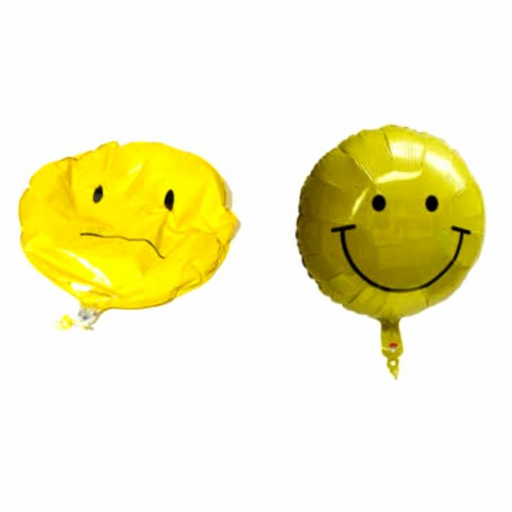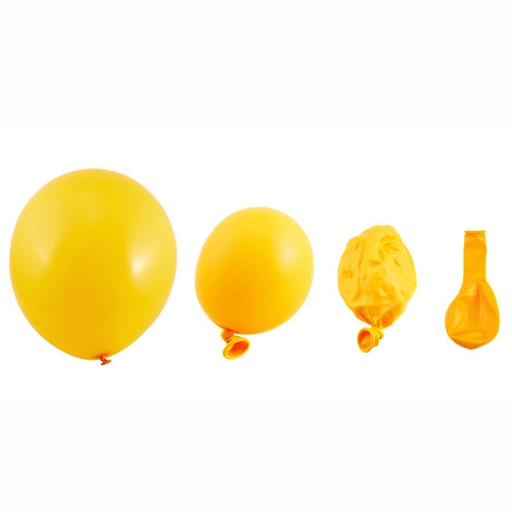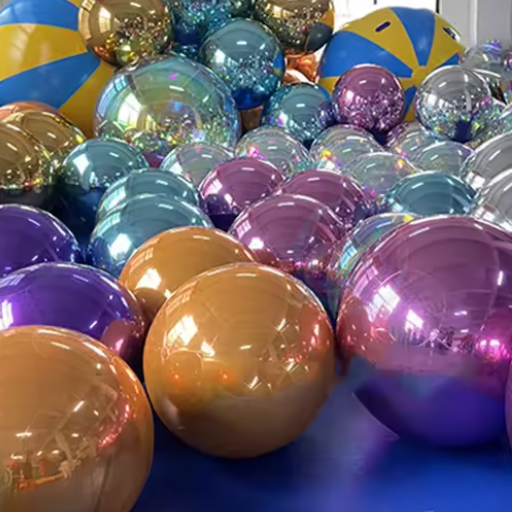Helium balloons are a complete hit at every party, adding fun, color, and whimsy to celebrations. Often, all that charm fades too fast from deflation or losing their buoyancy. Ever wondered how to keep the balloons floating longer with a look to die for? More people are thinking the same. Here we have the guide to help you: with tips and tricks to make a helium balloon live much longer so that they can stay colorful and afloat as long as possible. From birthday parties to weddings and just about any kind of party celebration, learn how to get more from these smile-makers of the party!
How Does a Helium Balloon Work?

Helium balloons float because helium is a gas lighter than our surrounding air, thus making the balloon buoyant. Once filled with helium, the lighter density of the gas renders the balloon capable of ascending and staying afloat. The balloon simultaneously acts as a container to confine helium, its casing providing enough tensile strength to keep the gas inside. Yet, over time, helium escapes through the thin walls of the balloon, thus diminishing its ability to rise. Hence, careful handling and storage go a long way towards saving a helium balloon.
What is Inside a Helium-Filled Balloon?
Typically, helium balloons consist mostly of helium gas, a noble gas with atomic number 2 on the periodic table. Being colorless, odorless, non-toxic, and lighter than air, helium gas can furnish lift. The lifting ability of helium is due to its low density; it is extremely less dense than nitrogen and oxygen, which are the chief components of the air we breathe.
The pressure inside the balloon exceeds atmospheric pressure just enough to retain the balloon’s shape. The latest data give a worse prediction for the weight of contemporary balloons than that of early balloons: Usually, the weight of a balloon dictates the material used to contain helium atoms. The heavier latex balloons stretch with contact, while their slight porous quality eventually lets helium pass out in 8-12 hours; Mylar balloons contain a more structured surface that holds helium for a longer period – some say more than days or weeks.
Very recent data: one liter will lift a gram of helium. So, keeping approximately 12 inches in diameter, a regular-sized latex balloon requires about 14 liters of helium for lift. Bigger balloons for stages or large-scale scientific deployments will call for much heavier use of helium.
Helium is a finite resource, mainly extracted from natural gas. Endowed with supplies in the United States, Qatar, and Algeria, worldwide helium production has recently hit nearly 160 million cubic meters as per US Geological Survey reports. But because of its limited supply and high demand in medical/scientific/technological applications, such as MRI machines, particle accelerators, helium conservation has become a global issue of paramount importance today.
Why Do Helium Balloons Deflate?
|
Key Point |
Details |
|---|---|
|
Helium escapes through the material |
Helium atoms are tiny and slip through spaces. |
|
Balloon material matters |
Mylar/foil slows helium loss better than latex. |
|
Diffusion process |
Helium leaks faster than air due to diffusion. |
|
Temperature impacts deflation |
Higher temperatures increase helium motion and escape rate. |
|
Internal coating helps |
Some balloons use gel coatings to hold helium longer. |
|
Knot sealing can leak |
Helium can escape through poorly sealed knots. |
|
Pressure plays a role |
Stretching latex balloons increases the escape rate of helium. |
|
Porosity of material |
Mylar/foil has smaller gaps, but is still porous. |
|
Helium characteristics |
Lighter and smaller than air molecules, aiding quicker escape. |
|
Equilibrium reached eventually |
Deflation stops when internal and external pressures equalize. |
How Long Do Helium Balloons Last?
Different factors affect the balloon’s lifespan: the materials used in their make-up, the environment, and whether treatments are applied to extend their float time. Here are some of the factors influencing helium balloon life:
- Balloon Material:
Latex balloons deflate within 12 to 24 hours, whereas foil/Mylar balloons may hold helium for several days or weeks.
- Environmental/Room Conditions:
If the balloons are exposed to hot temperatures or direct sunshine, helium expands and escapes more rapidly, shortening the balloon’s life. Cooler temperatures will slow down helium leakage.
- Balloon Seal:
A well-sealed opening keeps the helium longer; however, if it is poorly sealed or punctured, float time is considerably decreased.
- Helium Volume:
Bigger balloons or those with a larger volume of helium tend to take longer to float because helium takes time to leak out.
- Balloon Treatments:
Treatments like “Hi-Float” may be used on latex balloons; this coats the inner surface of the balloon and thus helps the balloons trap helium, which extends their life for several days of floating.
How to Keep Helium-Filled Balloons from Deflating for Longer?

- Opt for High-Quality Balloons: Go for high-quality latex or foil balloons that are not very susceptible to leaks.
- Seal the Balloon: Apply a sealant such as Hi-Float inside the latex balloon before inflating it to create a thin barrier that slows down helium leakage.
- Do Not Over-Inflate: Painting balloons will weaken their structure and sooner lead to deflation.
- Store Cool: Heat expands helium, so it is lost faster. Keep balloons cool for prolonged float time.
- Keep Them Away From Sharp Edges: Avoid brushing against sharp edges or rough surfaces for puncturing or damaging the balloon.
Following these suggestions will help you lengthen the flight of helium-filled balloons.
Use of Latex Balloons vs. Foil Balloons
|
Parameter |
Latex Balloons |
Foil Balloons |
|---|---|---|
|
Material |
Made from natural latex |
Made from metalized plastic (Mylar) |
|
Lifespan |
Deflates within hours to 1 day |
Can last up to 5 days |
|
Cost |
More affordable, ideal for bulk |
Higher cost per balloon |
|
Design Options |
A variety of colors, prints, and shapes available |
Intricate shapes and custom designs are possible |
|
Environmental Impact |
Biodegradable in 4-8 years |
Non-recyclable, not eco-friendly |
|
Helium Retention |
Loses helium quickly |
Retains helium for an extended time |
|
Durability |
Prone to popping; less durable |
More durable, resistant to damage |
|
Event Suitability |
Ideal for one-day events or casual parties |
Suitable for long-term events or displays |
|
Customization |
Easy to print logos and messages |
Excellent for photogenic and detailed designs |
|
Setup Time |
Needs inflation near event time |
Can be pre-inflated for advance setup |
Sealing Techniques to Make Balloons Last Longer
According to present-day recommendations, a high-quality balloon sealant or secure knot tied with a clip fastener is one of the best ways to prevent helium leakage out of a balloon and increase float time.
Preventing Helium from Escaping
So that helium does not escape and helium-filled balloons can float for as long as possible, it is equally important to look at the quality of materials and how to handle them best. Research shows that latex balloons are cheaper and biodegradable but much more porous than their foil (Mylar) counterparts, allowing helium to escape faster through their surface. According to recent studies, untreated latex balloons will hold helium for about 12-24 hours, whereas Mylar balloons can last for 3-5 days or more under controlled conditions.
Latex balloons should be treated using a good-quality sealant, preferably balloon gel. This sealant fills the tiny pores in the latex, thus reducing gas permeability and giving float times of several days, depending on environmental conditions. Industry experts indicate that with such treatment applied, the balloon can last up to three times more than untreated balloons. Besides, ensuring proper balloon tying using secure knots or clips also helps reduce the chances of helium leakage.
Environmental factors have an influence. Helium expands when in the presence of heat, which causes the balloon’s internal pressure to increase and thus facilitates leakage. Helium-filled balloons should be kept in a calm, controlled environment to avoid expansion and promote longevity. Recent recommendations state that the balloon should be kept in temperatures of 68-72°F (20-22°C). Also, avoid putting the balloons near sharp objects or rough surfaces that may cause a puncture.
By putting together quality materials, using the proper sealing procedure, and carefully handling, one can effectively extend the life of a helium-filled balloon. Such a balloon would serve well as decoration for different events.
What Factors Affect the Float Time of Helium Balloons?

The factors primarily influencing the float time of helium balloons are as we see below:
- Material of the Balloon- Latex is porous; hence, helium escapes quickly compared to foil balloons, which have much less permeability and retain helium for longer.
- Size of the Balloon—Size plays an important role in float duration; a larger balloon can hold more helium and stay afloat longer than a smaller one.
- Environmental Conditions—Heat expands helium so that it escapes faster, and cold contracts helium to reduce lift.
- Seal Quality- A well-sealed balloon, healthy locks in helium, thus maintaining the float duration.
Considering these points, one can make the balloon float longer or shorter.
Impact of Direct Sunlight and Temperature
Sunlight and temperature are the two factors that heavily influence a helium balloon’s performance and float time. Below is the list of the main things affected by sunlight and temperature with a view of their effects with experimental data:
- Expansion of Helium in Heat
In hotter conditions, helium expands inside balloons, increasing internal pressure and causing them to burst. Studies have indicated that temperatures exceeding 86°F (30°C) greatly increase the chances of expansion-implicated failures.
- Contraction in Cold Temperatures
In cold temperatures, helium contracts, thereby reducing balloons’ lift. Near-freezing temperatures tend to deflate these balloons, or so it may appear, due to the contraction of the helium volume within.
- Material Degradation
Direct ultraviolet rays degrade the balloon’s materials over time. This degradation reduces elasticity and, hence, increases the possibilities for leaks or bursts. Once exposed to sunlight, latex balloons could be destroyed in less than 30 minutes.
- Increased Leakage of Helium
The heat generated micro-expansions in the material, which accelerated helium leakage. Balloons baked in persistent sunlight could lose as much as 25% more helium than those kept in the shade.
- Shortened Optimal Duration
Continuous weather change stresses the balloon structure, significantly reducing its lifespan. Balloons exposed to sunlight and high temperatures, for example, may stay afloat for only 4-6 hours, while in perfect conditions, they should stay afloat for 12-16 hours.
Given these points, such an understanding would ensure the best application of helium balloons for outdoor events.
The Role of Helium Molecules and Helium Atoms
With the very nature of helium molecules and atoms, their peculiarity works against the behavior and performance of helium balloons. A helium atom exists singly as an element, meaning it is just a molecule; hence, it is incredibly light and non-reactive. They fill the balloon very well and produce sufficient lift for floating. However, the smallness of helium atoms makes their presence ephemeral as they escape through the balloon membrane with heat or less-than-perfect sealing. Therefore, understanding the properties of helium is very important for achieving the best performance and hence the balloon’s life.
How Balloon Size Influences Float Time
|
Key Point |
Details |
|---|---|
|
Larger balloons hold more helium |
A bigger size increases helium capacity and float duration. |
|
Small balloons deflate faster |
Smaller capacity leads to quicker helium loss. |
|
10-inch latex balloon |
Floats 8–10 hours, depending on helium quality and conditions. |
|
12-inch latex balloon |
Floats up to 12 hours if optimally prepared. |
|
Material influences retention |
Larger balloons with foil material last longer than latex. |
|
Balloon weight impacts float |
Larger balloons displace more air, enhancing buoyancy. |
|
Environmental factors matter |
Extreme temperatures shrink helium, reducing float time. |
|
Accessories reduce float time |
Added weight, like ribbons, shortens buoyancy duration. |
|
Hi-Float treatment extends time |
Coating preserves helium, increases float time even for large balloons. |
|
Optimal inflation timing |
Inflate within 1-2 hours before use for maximum float. |
How to Store Your Balloons to Extend the Float Time?

|
Key Point |
Details |
|---|---|
|
Use High-Quality Balloons |
High-quality latex or foil balloons retain helium longer. |
|
Store in Cool Locations |
Keep balloons in a shaded, cool, and dry environment. |
|
Avoid Direct Sunlight |
Sunlight weakens material, causing faster helium escape. |
|
Control Temperature |
Maintain a stable temperature; avoid extreme heat or cold. |
|
Use Hi-Float for Latex |
Apply Hi-Float gel to seal latex pores and extend float time. |
|
Avoid Overinflation |
Slightly underinflate to prevent balloons from popping due to heat. |
|
Protect from Wind and Rain |
Weather exposure weakens balloons and reduces float time. |
|
Use Larger Balloons |
Larger balloons hold more helium, lasting longer. |
|
Limit Additional Weight |
Keep accessories like ribbons light to avoid reducing buoyancy. |
|
Inflate Close to Event |
Inflate just before the event for maximum appearance and float time. |
Ideal Storage Conditions for Helium Balloons
Proper storage would maximize the float time of helium-filled balloons. Below are five ideal storage conditions to enhance their buoyancy:
- Cool, Dry Environment
To prevent helium from shrinking or leaking, keep balloons at moderate temperatures and low humidity. The best room temperature is between 68 and 72°F (20 to 22°C).
- Away from Direct Sunlight
Do not let balloons come in contact with direct sunlight or high temperatures, as unwanted expansion could cause them to pop away or lose helium.
- Indoor Storage
Keep balloons indoors so they do not face harsh outdoor elements, such as wind, rain, or extreme cold, that could be detrimental to their float time.
- Separate from Sharp Objects
Keep any sharp or pointed objects far away from the balloons during storage to avoid accidental punctures.
- Tightly Sealed Room
Bubbles also need a room tightly sealed from drafts and air movement for a quicker lost dissipation.
Importance of Proper Inflation and Handling
The life span of a balloon depends on its inflation and handling. Balloons must be inflated properly to the prescribed size; an overexpanded balloon will pop in no time. Handling operations are delicate, too; do not let the balloon brush against rough surfaces or touch objects with sharp edges. Taking all the precautions mentioned will help me enjoy my balloons for longer and keep them looking classy at the event.
What are the best practices for keeping the balloons afloat for a party?

Some good tips to keep balloons floating on party day include:
- Use the best helium available: The Helium grade used is very important as it decides the duration of inflation in balloons.
- Choose the right balloons: Latex balloons generally float for only 8-12 hours, while Mylar balloons float for days on end.
- Seal it up: Applying quarantine for latex balloons using Hi-Float considerably prolongs their float time by limiting the escape of helium.
- Inflate just before the event: Balloon inflation should occur as late as possible before the party, maximizing balloon float ability during the party.
- Avoid extremes in temperature: Heat causes helium to expand and escape at an accelerated pace, and cold makes balloons deflate; hence, keep balloons protected from both.
- Tie properly: Balloons must be fastened tightly to balloon weights, which help prevent them from flying away.
By following these simple guidelines, you can ensure that the balloons float and stay festive throughout the party.
Timing of Balloon Inflation Before an Event
Try to get balloons inflated closest to the start time of the event. Latex balloons filled with helium are typically inflated within 4 to 6 hours before an event to float nicely and look their best. Foil or Mylar balloons are most likely to stay inflated longer, so inflating them the night before will be an option as well.
Using Additives to Extend Their Float Time
Certain additives and treatments can be used to better the float time of helium-filled latex balloons. These products seal the balloon interior, minimizing helium leakage and extending the lifespan of the balloons. Here are five commonly used additives and methods:
- Hi-Float Gel
As the name suggests, this gel is applied to the inner surface of the latex balloon. If done properly, it can extend float time from the average 8-12 hours to several days, depending upon factors like the balloon size and ambient conditions.
- Chlorine Dioxide Solution
They treat punctures in balloons by impregnating the latex and hold helium longer inside a balloon to increase float duration.
- Balloon Sealants
Spray-on sealants are another option. They extend float time of latex balloons by 50%, inside for protection.
- Double Stuffing with Another Balloon
Putting one latex balloon inside another will create a more substantial barrier for helium, thus slowing the helium diffusion rate enough to increase float time significantly.
- Temperature Regulation Techniques
Although not traditionally thought of as an additive, shielding balloons from extreme heat or cold acts as an indirect preservative. Cool, steady temperatures prolong the life of helium.
If applied correctly, these methods will give your balloons a longer working life and ensure they look beautiful throughout your event.
Tips for Larger Balloons at Events
| Key Point | Details |
|---|---|
|
Choose sturdy materials |
Use durable latex or foil for longer-lasting balloons. |
|
Consider helium capacity |
Larger balloons hold more helium and offer extended float time. |
|
Anchor securely |
Use weights or stakes to prevent balloons from drifting. |
|
Match to event scale |
Use oversized balloons for larger spaces or outdoor events. |
|
Avoid overinflation |
Inflate slightly less to prevent popping in hot weather. |
|
Create entry focal points |
Design bold arches or columns as eye-catching decor. |
|
Enhance with accessories |
Add lights, tassels, or florals to amplify visual appeal. |
|
Balance with small balloons |
Mix sizes to achieve depth and dynamic decoration. |
|
Prepare for wind |
Position balloons in sheltered areas or use heavy-duty anchors. |
|
Test placement in advance |
Ensure visibility and accessibility align with the event layout. |
References
-
APL’s contributions to stratospheric ballooning for space science – Discusses helium-filled balloons used in space science.
-
Of Balloons in John Wideman’s Fiction – Includes references to helium balloons in literature.
-
Maine Campus February 15 1968 – Mentions helium-filled balloons in historical contexts.
Frequently Asked Questions (FAQ)
Q: How can I make my latex helium balloon last much longer?
A: To make your latex helium balloon last much longer, apply a product called Hi-Float inside of the balloon before inflating it. This product creates a coating that helps keep helium from escaping, allowing the balloons to float longer.
Q: What is the best way to inflate your balloons to ensure they stay inflated longer?
A: The best way to ensure your balloons stay inflated longer is to use a helium tank and inflate them just before your event. Ensure the balloons are filled with enough helium gas to properly float, and secure them tightly to prevent helium leaks.
Q: How does the size of a latex helium balloon affect its float time?
A: Bigger balloons hold more helium and can float longer than smaller ones. If you want your helium-filled balloons to last much longer, consider using larger-sized balloons for better balloon longevity.
Q: Are there specific types of balloons that stay afloat longer?
A: Yes, foil helium balloons generally stay afloat longer than latex balloons because foil is less porous. However, with proper treatment, latex helium balloons can also last a significant amount of time.
Q: How can I prevent helium from escaping from my party balloons?
A: To prevent helium escape, ensure that the neck of the balloon is tightly tied or sealed. Using a balloon sealant inside the balloon can also help reduce helium leaks and make helium balloons last longer.
Q: Why do helium-filled latex balloons deflate faster than foil balloons?
A: Helium-filled latex balloons deflate faster because the latex material is porous, allowing helium gas to escape more quickly. Foil balloons hold helium better due to their non-porous material.
Q: How should I store my helium-filled balloons to maximize their float time?
A: To maximize float time, keep balloons in a cool, consistent temperature environment away from sharp objects and direct sunlight, as heat can cause the helium to expand and escape.
Q: Can I reinflate a partially deflated helium balloon to make it last longer?
A: While you can add more helium gas to a partially deflated balloon, the initial escape points will still exist, and it might not stay inflated as long as a newly filled balloon.
Q: What environmental factors affect how long helium balloons last?
A: Temperature and humidity are the main environmental factors. Helium balloons last longer in cool, dry conditions, whereas heat can cause them to expand and lose helium faster.









